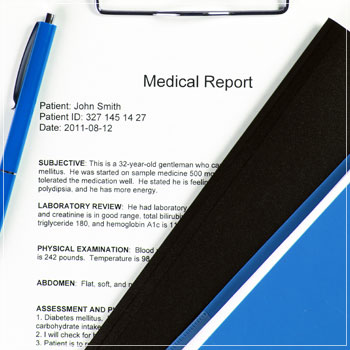Yet, the uniqueness of the field requires that you address multiple points:
A Doctor/Patient Relationship Existed
 Before your claim can proceed, you and your lawyer must show a relationship existed between you and the defendant. However, this is fairly easy: If the doctor agreed to provide some type of care, treatment, or advice, the law considers this sufficient enough to indicate a relationship.
Before your claim can proceed, you and your lawyer must show a relationship existed between you and the defendant. However, this is fairly easy: If the doctor agreed to provide some type of care, treatment, or advice, the law considers this sufficient enough to indicate a relationship.
The Doctor Deviated from the Standard of Care
This is where the claim becomes tricky. Medical records, too, aren’t always accurate: As you request these documents, you’ll find that the doctor and his or her staff may have left out or altered important information.
As a result, a lawyer taking on your case must first establish the “standard of care” and then reveal your doctor failed to follow it.
Proving at this point often involves extensive research:
- Reviewing medical journals
- Reading through clinical practice guidelines
- Examining the community where the defendant practices
- Speaking with and getting testimony from other similarly experienced experts.
In other instances, this could be determining the physician failed to follow proper procedures, such as getting a patient’s “informed consent.” Before a patient agrees to a procedure, the doctor must have informed him or her about all possible benefits, risks, and alternatives and then gotten his or her written consent.
This Breach of Care Led to the Injury
At this point, you and your lawyer must provide a direct correlation between the lack of care received and your injury.
Although it may appear straightforward, be warned that the defendant frequently attempts to make it seem like your injury occurred from an underlying medical condition. He or she will further provide evidence and testimony that this injury already existed before you went through surgery or a particular treatment program.
The Injury Resulted in Damages
Not only were you injured, but the condition led to increased medical bills, a high degree of pain, and decreased earning capacity.
At this stage, you’ll need to prove the injury:
- Put you in an extreme level of pain and mental anguish.
- Required additional treatment, for which you had to pay.
- Prevented you from working or permanently decreased your income.
Later, these points help determine how much your case should be rewarded.
Understand that medical malpractice cases are often lengthy, complicated affairs that could last several years. If you believe a doctor didn’t maintain a standard of care and that negligence directly resulted in a life-altering injury, bring your claim to Trantolo & Trantolo’s Connecticut medical malpractice lawyers. Contact any of our Connecticut locations to speak with an experienced lawyer.



